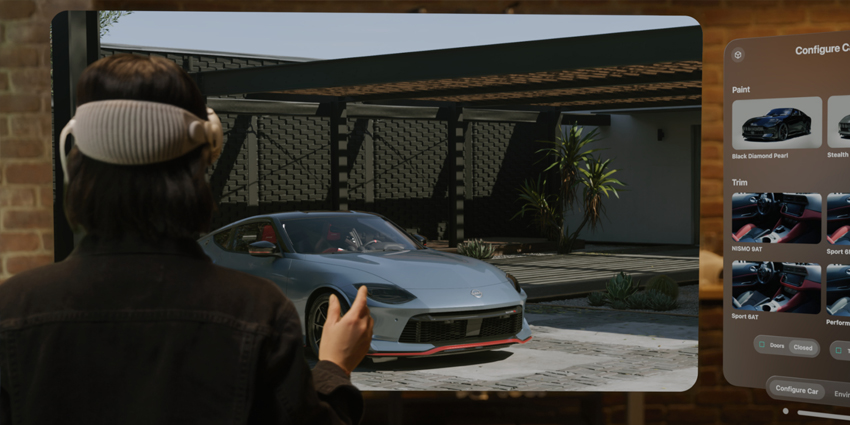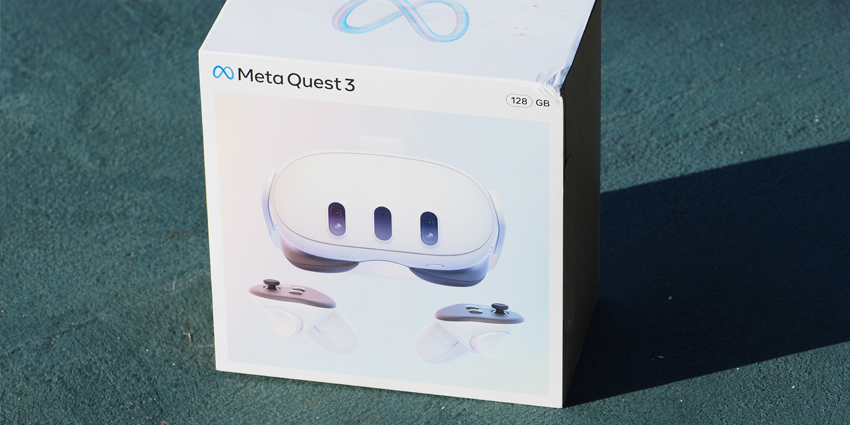Today, at NVIDIA GTC 2024, company CEO Jensen Huang announced that the firm’s enterprise-ready digital twin and immersive content creation hub Omniverse is debuting on Apple’s Vision Pro. NVIDIA is debuting Ominverse Cloud APIs, which allow Apple Vision Pro users to customise and distribute the platform’s high-quality OpenUSD file types on mobile devices without losing content or performance quality thanks to cloud-compensated computing processes.
During the event’s opening keynote, Jensen noted:
Today, we are announcing that Omniverse Cloud streams to the Vision Pro. – Vision Pro connected to Omniverse portals you into Omniverse and because all of these CAD tools and all these different design tools are now integrated and connected on Omniverse.
Now, Vision Pro users can stream Omniverse creations onto a Vision Pro device, with the cloud API offloading much of the computing power needed to run such content – NVIDIA’s Graphics Delivery Network (GDN) also assists with Vision Pro OpenUSD streaming. NVIDIA GDN is available in over 130 countries; workers can access it on any compatible device. And US customers can, of course, leverage Omniverse cloud renders on the Vision Pro.
During the GTC 2024 opener, NVIDIA highlighted how automotive manufacturers – a critical industry use case for the Omniverse platform on the whole – can use Vision Pro and its cloud-based Omnievrese services to collaborate over a digital twin of a car while also interacting with and altering elements of an Omniervse digital twin.
Mike Rockwell, the Vice President of the Vision Products Group at Apple, added:
The breakthrough ultra-high-resolution displays of Apple Vision Pro, combined with photorealistic rendering of OpenUSD content streamed from NVIDIA accelerated computing, unlocks an incredible opportunity for the advancement of immersive experiences.
Rockwell noted, “Spatial computing will redefine how designers and developers build captivating digital content, driving a new era of creativity and engagement.”
Leveraging Cloud Infrastructure to Ensure Enterprise Digital Twin Success
Alongside the aforementioned cloud-based streaming support, NVIDIA is also helping enterprise clients leverage digital twins via RTX Enterprise Cloud Rendering.
By leveraging the framework of cloud software and hardware components, NVIDIA ensures that enterprise clients can leverage digital twins on Vision Pro devices without losing display or framerate quality.
Rev Lebaredian, the Vice President of Simulation at NVIDIA, explained:
Apple Vision Pro is the first untethered device which allows for enterprise customers to realize their work without compromise. We look forward to our customers having access to these amazing tools.
On the other hand, Vision Pro users can also leverage hybrid rendering routes. Giving clients a choice in how they interact with Omniverse content.
During the GTC keynote, Jensen showed a promotional video highlighting how the firm’s hardware manufacturing partner, Wistron, uses the Omniverse platform and Vision Pro hardware to visualise factory floor digital twins.
More on Apple Vision Pro
Apple released its first public update on its debut XR device, which hit the market earlier this year. The update improves core features as the firm starts its spatial computing journey. Despite only being released last month, Apple is already optimising the product for early adopters.
The Apple Vision Pro is priced at $3,500, which puts it in the enterprise pricing range and makes it unaffordable for some consumers. However, the device is equipped with high-end specifications, including 256GB/512GB/1TB storage, a 23 million pixel display, 90Hz/96Hz/100Hz refresh rate, spatial audio, 2 hours of battery life, Bluetooth, eye tracking, hand tracking, and a weight of 21.2-22.9 ounces, which justifies its price.
Thanks to Apple’s preparation of developers last year, the Apple Vision Pro may break the industry trend of impressive XR devices that lack system-selling applications. More than 1,000 spatial applications are available on the XR device, including many enterprise services ready for frontline workers. Some leading workplace applications on the Apple Vision Pro include SyngeryXR, JigSpace, Omniplan, Zoom, Microsoft 365, and Teams.







